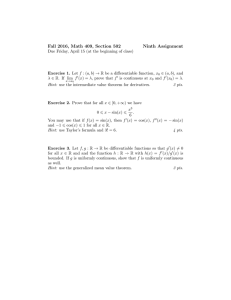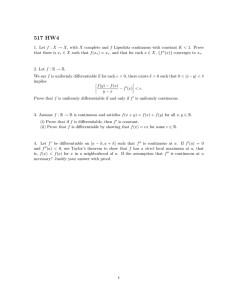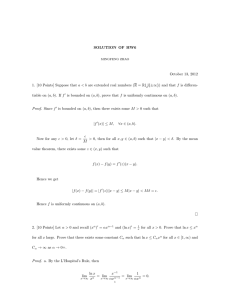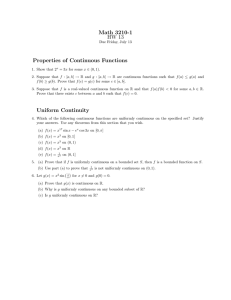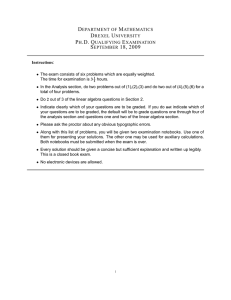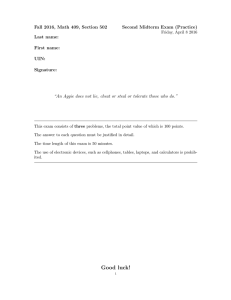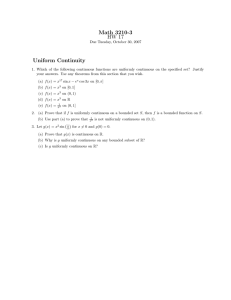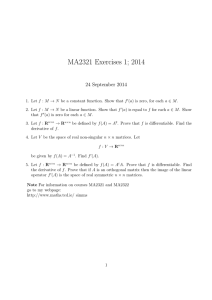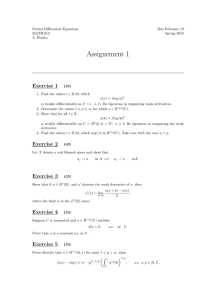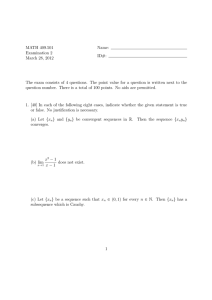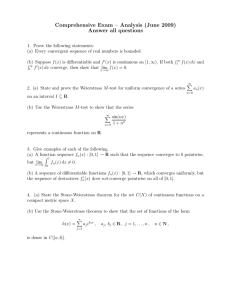MATH 409.501 Name: Examination 2 ID#:
advertisement
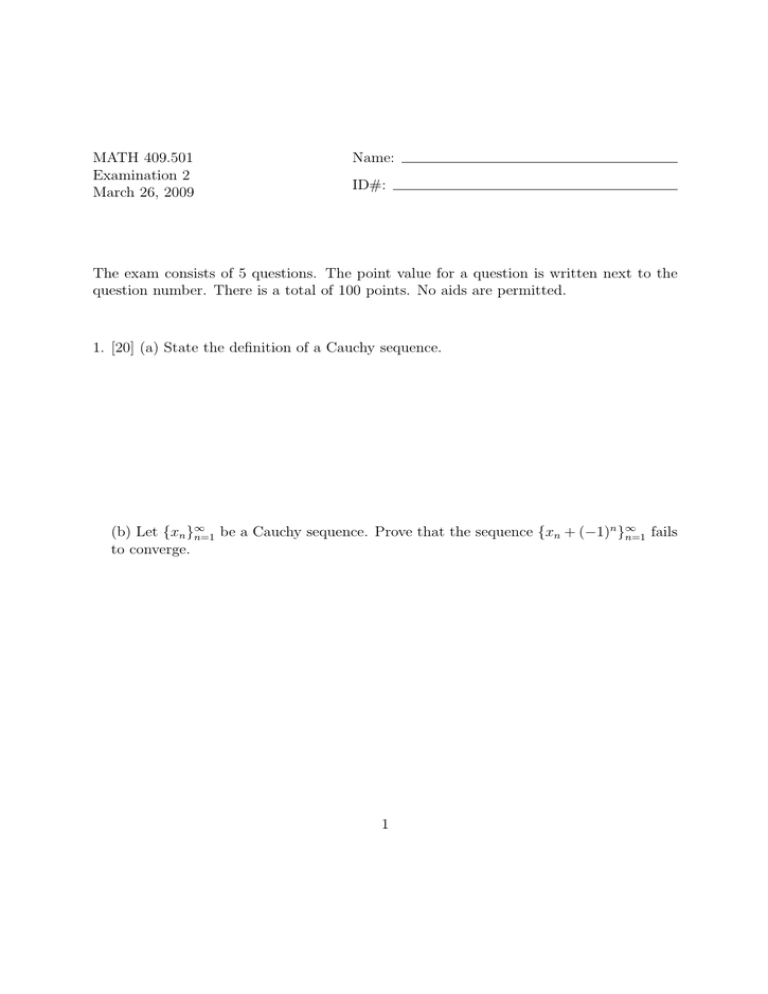
MATH 409.501
Examination 2
March 26, 2009
Name:
ID#:
The exam consists of 5 questions. The point value for a question is written next to the
question number. There is a total of 100 points. No aids are permitted.
1. [20] (a) State the definition of a Cauchy sequence.
n ∞
(b) Let {xn }∞
n=1 be a Cauchy sequence. Prove that the sequence {xn + (−1) }n=1 fails
to converge.
1
(c) Let {xn }∞
n=1 be a sequence such that 0 ≤ x1 ≤ 3 and xn+1 =
Prove that {xn }∞
n=1 converges and find its limit.
2
√
6 + xn for all n ∈ N.
2. [20] (a) Let f be a function defined on an open interval I and let a ∈ I. State the
definition of the limit of f (x) as x → a.
2
(b) Prove directly from the definition of limit that lim x cos
x→0
x2 + x − 2
.
x→1
x−1
(c) Evaluate lim
3
x3 + 5
x2 + 2
= 0.
3. [20] (a) State the Intermediate Value Theorem.
(b) Assuming that the function cos x is continuous on R, prove that there exists an
x ∈ R such that x6 + x4 + 1 = 2 cos x3 .
4
4. [20] (a) State the definition of uniform continuity.
(b) Give an example of a bounded function f : (0, 1) → R which is continuous but not
uniformly continuous.
5
(c) Let E be a nonempty subset of R. Prove that if two functions f and g are uniformly
continuous and bounded on E then the product f g is uniformly continuous on E.
(d) Show that the conclusion in part (c) is false if f and g are not assumed to be
bounded.
6
5. [20] (a) Prove directly from the definition of the derivative that if the function f is
differentiable at a point a then the function g defined by g(x) = xf (x) is differentiable
at a.
(b) Let f and g be differentiable functions on R such that f (0) = 1, f 0 (0) = −1, and
g 0 (1) = 3. Determine (g ◦ f )0 (0).
(c) State the Mean Value Theorem.
7
